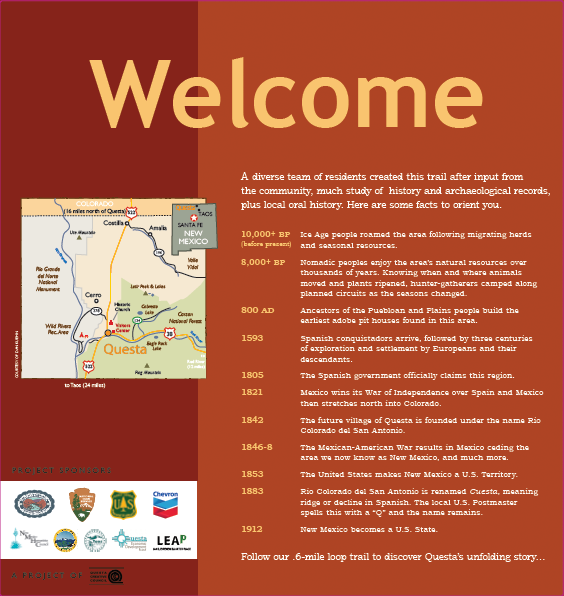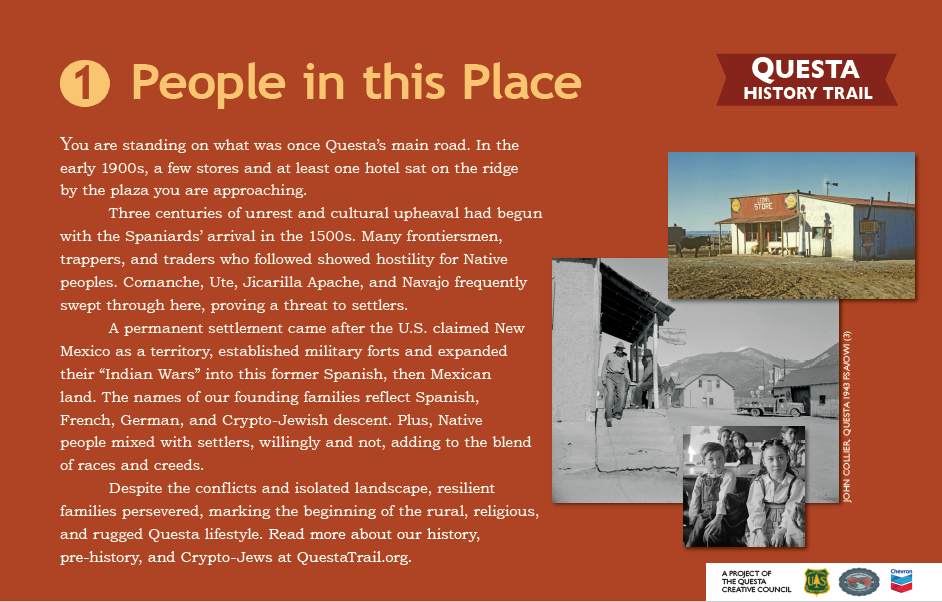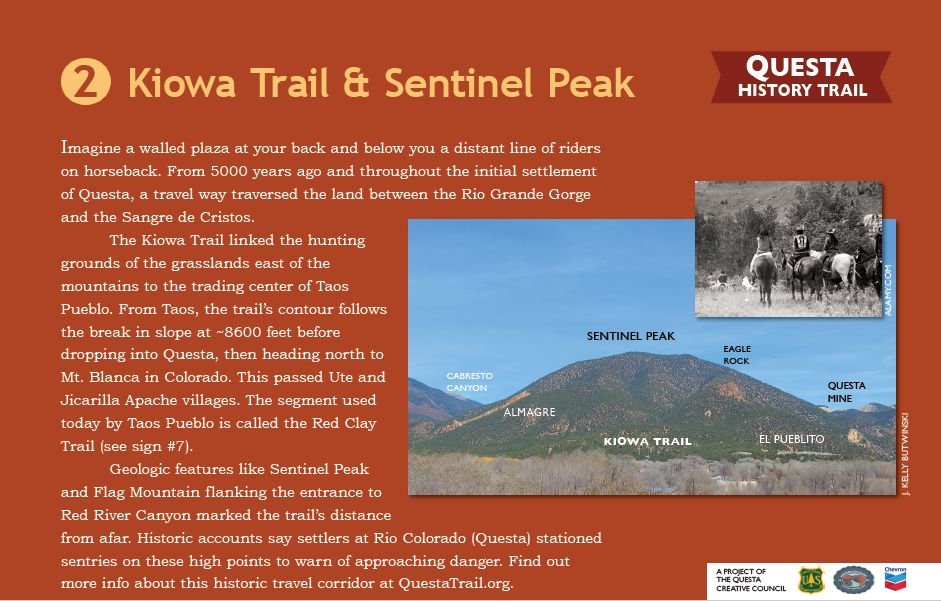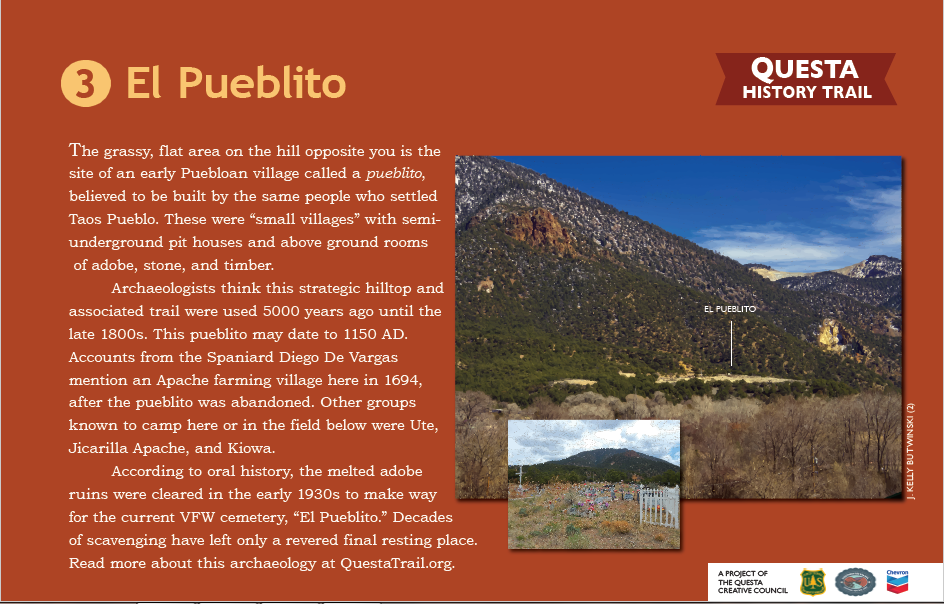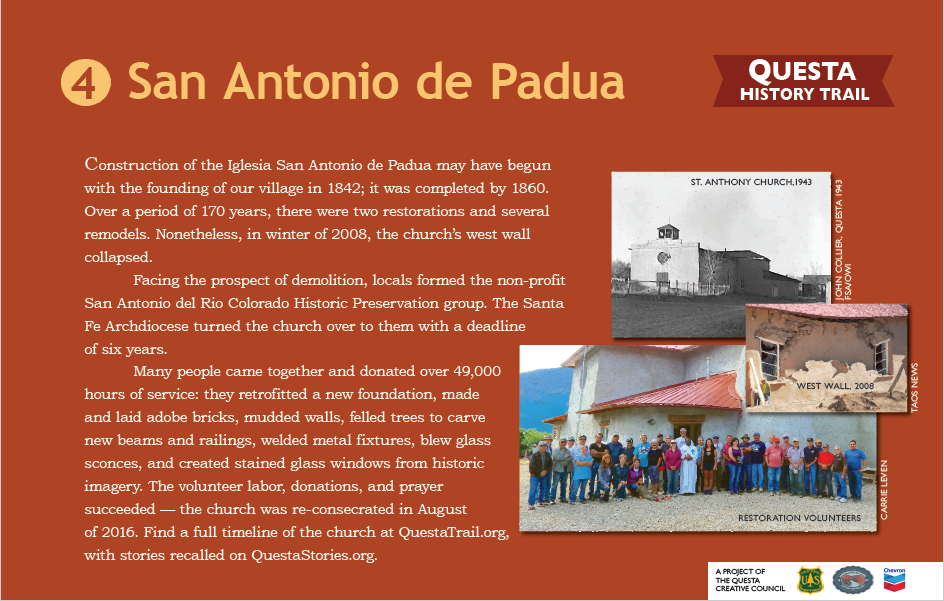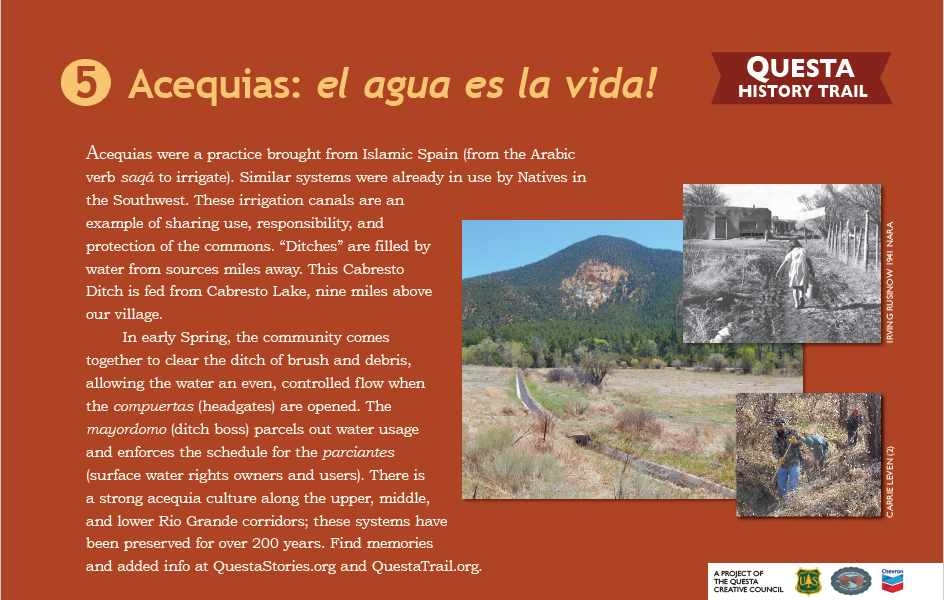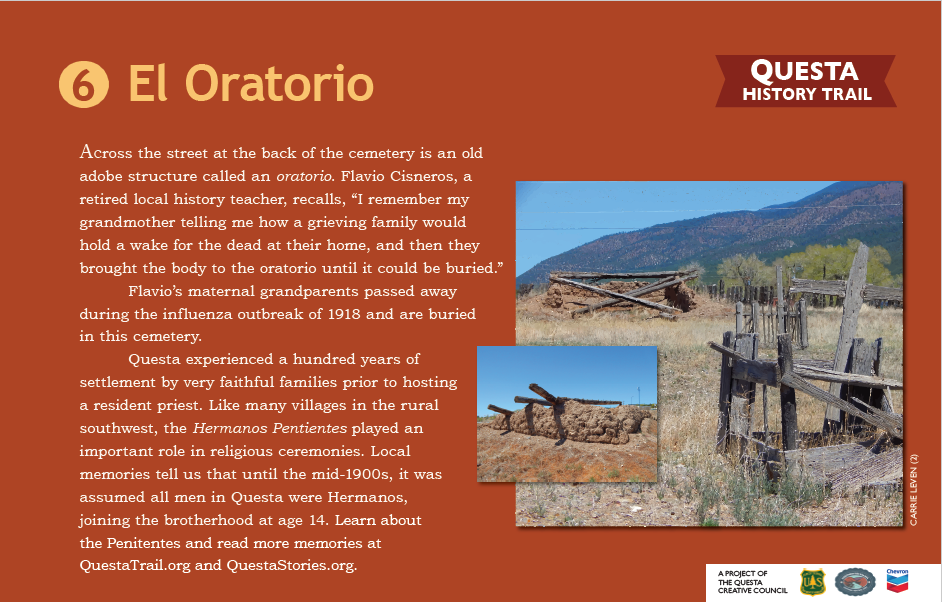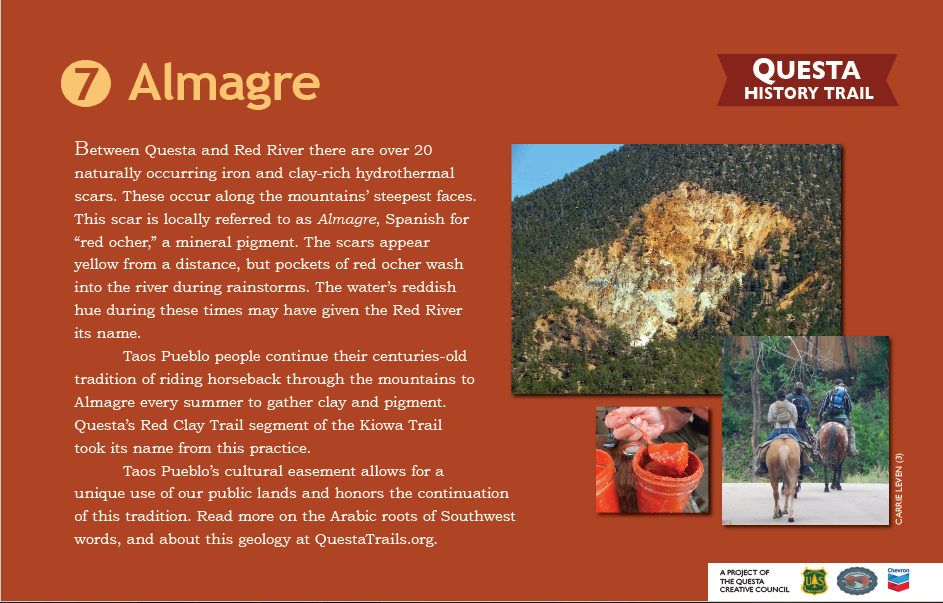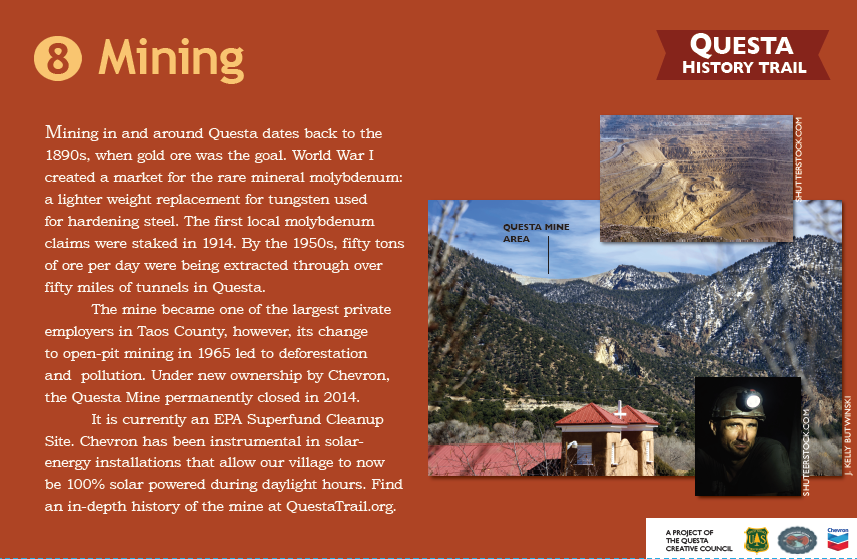Questa History Trail
About the Trail
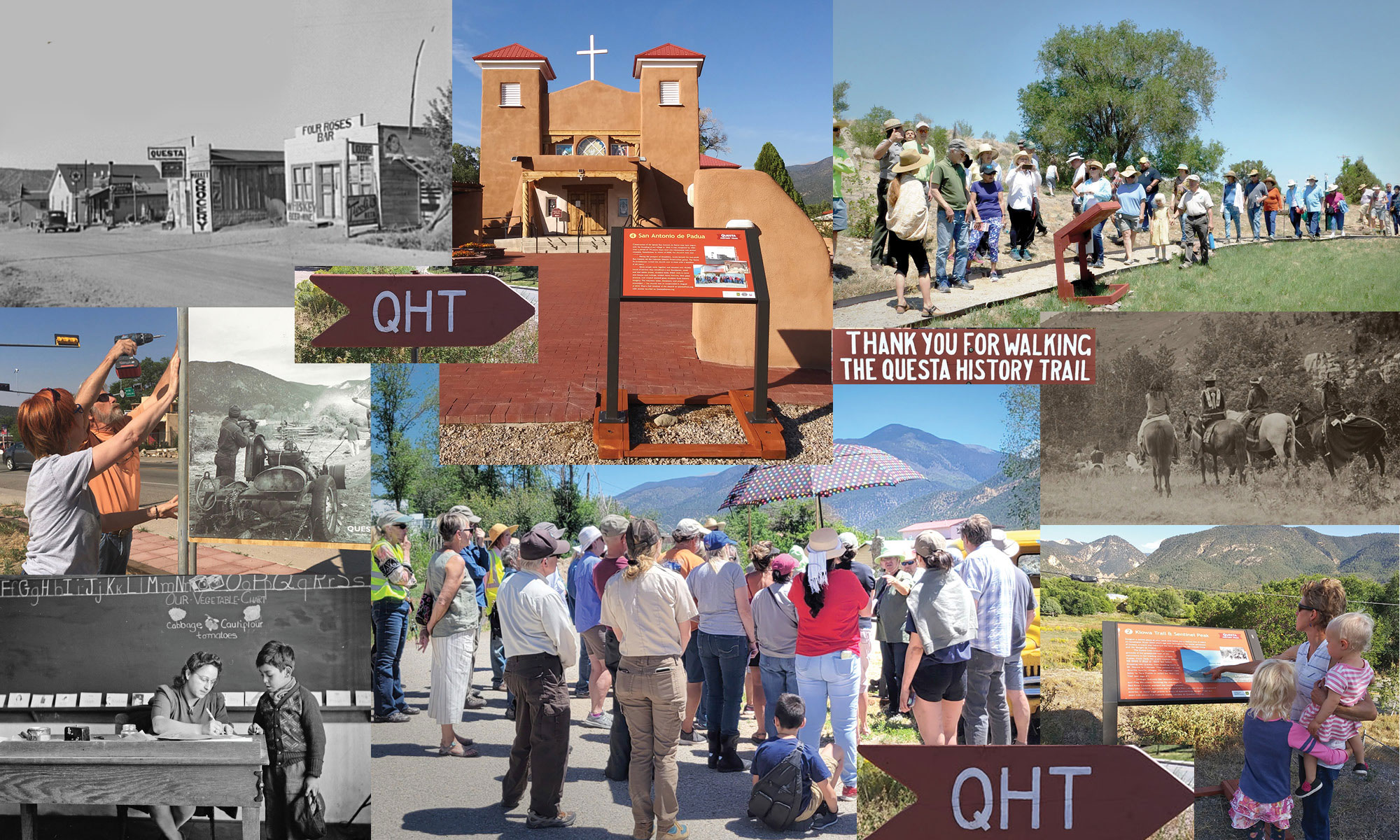
 24 miles north of Taos and 20 miles south of Colorado, on a ridge (“cuesta“) overlooking the Kiowa Trail, one small village holds a visible history of independent devotion, necessary artistry, and rugged determination.
24 miles north of Taos and 20 miles south of Colorado, on a ridge (“cuesta“) overlooking the Kiowa Trail, one small village holds a visible history of independent devotion, necessary artistry, and rugged determination.
The Questa History Trail is a half-mile walking route that begins at the intersection of state highways 522 and 38, and makes a loop through the historic church plaza and back to your starting point. Start at the triangular Welcome sign and follow the red, wooden arrows.
Interpretive signs weave a vibrant history that reflects many interrelated topics from thousands of years of Native settlements and trade routes, to the impact of the Spanish Inquisition on the American Southwest, rural religious practices, multiculturalism, and the unexpected impact of WWI still very relevant today in Questa.
Short-term parking is available on the corner at the Welcome sign, or just down the hill at the adjacent Visitors Center.
We invite all of you to enjoy this community asset. Whether you are a resident rounding out your own knowledge of where you live, a visitor gaining understanding of this unique area, or a student discovering the many ways that world history, science, culture and heritage inform your life every day, this walk, and this related website can be a revelation. Enjoy!
While generally an easy walk, this route is rough in places, and is not all ADA accessible. Almost all of the interpretive signs can be driven to, if necessary.
****Please be respectful of residents and worshipers.****
Photo credits:
Schoolteacher circa 1941, John Collier; Street scene circa 1933, Russell Lee; Indian natives on horseback, Alamy image; Signs and viewers images, Alberta Bouyer; Event photos, yellow truck, Lynn Skall; all other photoss, Carrie Leven.
Signs Along the Questa History Trail
Click on each sign image below to open an expanded view and a deeper look at each topic, with related, thought-provoking content. Follow our .6-mile loop trail to discover Questa’s unfolding story.
Building the Trail
The Trail supports the Questa community’s shift from a mining town to a broader economy, one that focuses on cultural preservation, and includes sharing our local history and surrounding beauty with visitors, residents, and homecoming family.
Our project had its genesis in round table discussions led by Frontier Communities (a small-town category of MainStreet, USA).
The History Trail is one of the founding projects that motivated the creation of the non-profit Questa Creative Council. Our team was much inspired by the work of the St. Anthony’s Church restoration that brought together so many skilled and generous people working toward a valuable goal.
We exist in collaboration with LEAP (Land, Experience, and Art of Place), an educational group under the local non-profit Localogy, that is building a cache for oral histories and archival imagery. The focus is on local stories, many of which reflect the topics introduced on the Questa History Trail. Find these stories online at www.QuestaStories.org. This, in turn, is part of a larger community archive project for Northern New Mexico.
Another related alliance is with the Creative Council’s Northern New Mexico Music project, a platform to do for music what the Questa Stories does for oral history. The upper Rio Grande is home to a remote, isolated, and unique culture that deserves to be honored.
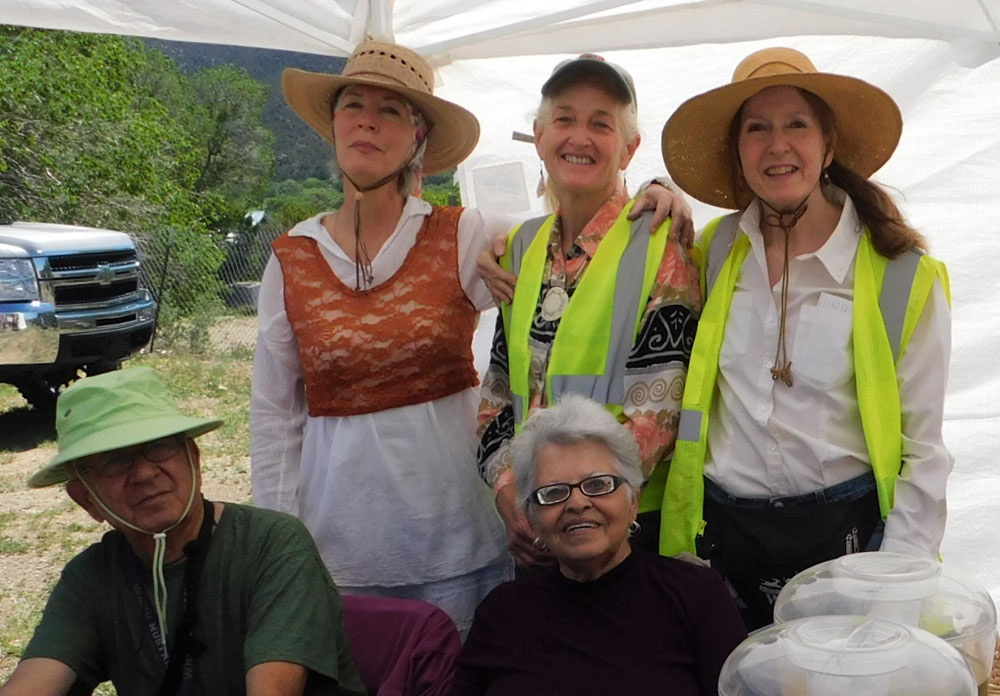
Our founding team is a diverse group of residents.
Mark Sideris – Historic Saint Anthony’s Church Restoration Project foreman, carpenter, and landscape-engineer advisor.
Flavio Cisneros – Retired history teacher and oral-history facilitator.
Jeannie Masters & Kate Cisneros – North Central NM Food Pantry founders and co-directors, and oral-history facilitators.
Tim Long – Small business owner, carpenter, and seasonal ranger at Rio Grande del Norte National Monument.
Alberta Bouyer – Founding Questa Tourism Director, writer, marketing consultant, and project administrator.
Martha Shepp – Artist, editor, and the project’s graphic designer.
With great thanks to Carrie Leven – archaeologist with the Questa Ranger Station.
LEAP* collaborators:
Claire Cote, LEAP director – Artist and educator, gentle instigator, mother, and radical homemaker. Oral history collector and image archive facilitator.
Gaea McGahee, LEAP Creative Associate – Questa Farmers Market founder and manager, adjunct anthropology faculty. Oral history collector and image archive facilitator.
While we lack a self-identified Native American team member, this heritage lives on in the ancestry of many Questa residents and in family stories shared over the generations. Our investigations and research has sought to represent all people within the village’s history in a fair, accurate, and respectful manner. We take pride in the diverse cultures of the southwest and their distinctive features, while seeking the higher truth of a shared humanity.
Photographs: John Collier, Questa student portraits circa 1941, archived at the Library of Congress.
These portraits are from the Library of Congress and we would love to add more, from your collections. Please contact us if you can identify any of these children from 1941 Questa schools, or if you would like to add images of your own.
The Questa History Trail depends on community participation. Join our team and ensure a bright future for this exciting project!
Creation of this project was funded by:
National Park Services’ Rivers, Trails and Conservation Assistance program
Northern Rio Grande National Heritage Area
New Mexico Humanities Council
Support from the Village of Questa
and additional support from the US Forest Service, Chevron, and Taos County Lodgers Tax.
The Questa History Trail is a project of the Questa Creative Council. The QCC is a nonprofit tax-exempt organization under section 501(c)(3) of the US IRS Code.
We thank the QCC’s current sponsors for their support of our ongoing projects:
The Taos Community Foundation, Art Questa, Ambitions Consulting Group, Virsylvia Farms, plus many individual donors.

